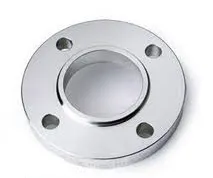-
Cangzhou Yulong Steel Co., Ltd.
-
Phone:
+86 13303177267 -
Email:
admin@ylsteelfittings.com
- English
- Arabic
- Italian
- Spanish
- Portuguese
- German
- kazakh
- Persian
- Greek
- French
- Russian
- Polish
- Thai
- Indonesian
- Vietnamese
- Zulu
- Korean
- Uzbek
- Hindi
- Serbian
- Malay
- Ukrainian
- Gujarati
- Haitian Creole
- hausa
- hawaiian
- Hebrew
- Miao
- Hungarian
- Icelandic
- igbo
- irish
- Japanese
- Javanese
- Kannada
- Khmer
- Rwandese
- Afrikaans
- Albanian
- Amharic
- Armenian
- Azerbaijani
- Basque
- Belarusian
- Bengali
- Bosnian
- Bulgarian
- Catalan
- Cebuano
- China
- China (Taiwan)
- Corsican
- Croatian
- Czech
- Danish
- Esperanto
- Estonian
- Finnish
- Frisian
- Galician
- Georgian
- Kurdish
- Kyrgyz
- Lao
- Latin
- Latvian
- Lithuanian
- Luxembourgish
- Macedonian
- Malgashi
- Malayalam
- Maltese
- Maori
- Marathi
- Mongolian
- Myanmar
- Nepali
- Norwegian
- Norwegian
- Occitan
- Pashto
- Dutch
- Punjabi
- Romanian
- Samoan
- Scottish Gaelic
- Sesotho
- Shona
- Sindhi
- Sinhala
- Slovak
- Slovenian
- Somali
- Sundanese
- Swahili
- Swedish
- Tagalog
- Tajik
- Tamil
- Tatar
- Telugu
- Turkish
- Turkmen
- Urdu
- Uighur
- Welsh
- Bantu
- Yiddish
- Yoruba

Jan . 23, 2025 01:31 Back to list
1 inch seamless pipe
Investing in 1-inch seamless pipes can be a pivotal decision for industries requiring stability, durability, and performance in fluid transportation systems. Seamless pipes, unlike their welded counterparts, are crafted from a single block of material, eliminating the possibility of a seam-related weakness. This unique construction makes them vital in numerous applications, particularly in high-pressure, high-temperature conditions where reliability is crucial.
In terms of installation, the consistent dimensions of 1-inch seamless pipes contribute to easier dimension matching with other system components, reducing assembly time and potential errors. Their uniformity allows for more predictable performance which can significantly cut maintenance costs and downtime. This attribute further bolsters their position as a cost-effective solution over the pipe's lifecycle despite a higher initial investment compared to ERW (Electric Resistance Welded) pipes. When considering supplier credibility, it is crucial to note the reputation and certification standards that govern seamless pipe manufacturers. High-quality manufacturers adhere to stringent ASTM (American Society for Testing and Materials), ASME (American Society of Mechanical Engineers), and EN (European Norms) standards, ensuring their products meet the necessary performance and safety benchmarks. Procuring seamless pipes from registered and certified suppliers enhances project reliability and ensures compliance with industry regulations. Adopting 1-inch seamless pipes reflects a commitment to operational excellence and safety. For project managers and procurement specialists, a thorough understanding of the synergies between design specifications, environmental conditions, and material properties is vital. It fosters successful project execution and ensures that the chosen materials not only meet technical requirements but also deliver cost efficiencies and risk mitigation over the system's lifetime. In conclusion, the choice of 1-inch seamless pipes encompasses an array of benefits that appeal across various industrial sectors. Their seamless design ensures unmatched strength and durability essential for the high demands of modern engineering projects. By aligning procurement decisions with expert insights and established standards, industries can harness the full potential of seamless pipes, driving productivity and maintaining a competitive edge in an increasingly challenging marketplace.


In terms of installation, the consistent dimensions of 1-inch seamless pipes contribute to easier dimension matching with other system components, reducing assembly time and potential errors. Their uniformity allows for more predictable performance which can significantly cut maintenance costs and downtime. This attribute further bolsters their position as a cost-effective solution over the pipe's lifecycle despite a higher initial investment compared to ERW (Electric Resistance Welded) pipes. When considering supplier credibility, it is crucial to note the reputation and certification standards that govern seamless pipe manufacturers. High-quality manufacturers adhere to stringent ASTM (American Society for Testing and Materials), ASME (American Society of Mechanical Engineers), and EN (European Norms) standards, ensuring their products meet the necessary performance and safety benchmarks. Procuring seamless pipes from registered and certified suppliers enhances project reliability and ensures compliance with industry regulations. Adopting 1-inch seamless pipes reflects a commitment to operational excellence and safety. For project managers and procurement specialists, a thorough understanding of the synergies between design specifications, environmental conditions, and material properties is vital. It fosters successful project execution and ensures that the chosen materials not only meet technical requirements but also deliver cost efficiencies and risk mitigation over the system's lifetime. In conclusion, the choice of 1-inch seamless pipes encompasses an array of benefits that appeal across various industrial sectors. Their seamless design ensures unmatched strength and durability essential for the high demands of modern engineering projects. By aligning procurement decisions with expert insights and established standards, industries can harness the full potential of seamless pipes, driving productivity and maintaining a competitive edge in an increasingly challenging marketplace.
Next:
Latest news
-
ANSI 150P SS304 SO FLANGE
NewsFeb.14,2025
-
ASTM A333GR6 STEEL PIPE
NewsJan.20,2025
-
ANSI B16.5 WELDING NECK FLANGE
NewsJan.15,2026
-
ANSI B16.5 SLIP-ON FLANGE
NewsApr.19,2024
-
SABS 1123 FLANGE
NewsJan.15,2025
-
DIN86044 PLATE FLANGE
NewsApr.19,2024
-
DIN2527 BLIND FLANGE
NewsApr.12,2024
-
JIS B2311 Butt-Welding Fittings LR/SR 45°/90° /180°Seamless/Weld
NewsApr.23,2024











